Every day 250 people start to lose their sight in the UK. As of 2015, more than two million people in the UK are living with sight loss that is severe enough to have a significant impact on their daily lives, such as not being able to drive.
Nearly two-thirds of people living with sight loss are women. People from black and minority ethnic communities are at greater risk of some of the leading causes of sight loss. Adults with learning disabilities are 10 times more likely to be blind or partially sighted than the general population. Macular degeneration is the most common cause, accounting for approximately half of registered cases.
Approximately 70% of people included on the Sight Impaired and Severe Sight Impaired Registers for the United Kingdom are over 75 years of age. With the management of systemic disease improving, it is expected that the number of elderly within our population is set to rise even further. This will undoubtedly have the effect of a greater demand for services for visually impaired people, which will include the provision of low vision aids.
Community eye care services are well placed to take on increasing responsibility for helping those with reduced vision, either using existing schemes, such as established in Wales, or by developing services to meet local needs.
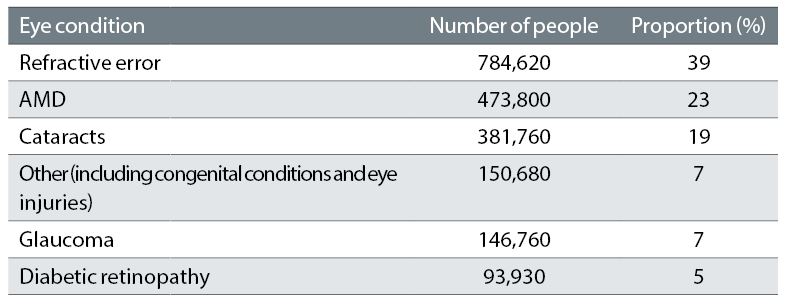
Table 1: Number of people estimated to have each eye condition and the proportion of total sight loss
Who are we dealing with?
If you got together everybody from the UK who had difficulty seeing what they wanted to, their average age would be somewhere in the late 60s to early 70s. So most visually impaired people are elderly. The commonest cause of sight loss among this group would be age-related macular degeneration (AMD). The visual impairment with AMD is loss of central vision.
If we now asked everybody over 60 to leave, the majority would exit, and in the remaining group by far and away the commonest cause of sight loss would be diabetic eye disease. Diabetes can damage vision in many ways but the most likely way is through maculopathy, so central vision loss is the most likely impairment. This is important for a number of reasons. If the impairment (what is wrong with your vision) is central vision loss, then the most likely disability (specific task that is now problematic) to be complained about is difficulty reading. Difficulties with television, identifying faces and carrying out fine detail tasks fall some way behind this. Also, the impact on mobility and not bumping into things is minimal. This is why, despite large swathes of the population having a visual impairment, this is not realised by many who expect a stereotypical white stick/dark glasses display. This is also sadly the reason why many elderly people with significant central vision loss might not get the attention they need from those around them as they can still manage to function in ways not requiring central vision. Among the over 40s, a significant number will have lost vision through progressive glaucoma which is one condition that may result in loss of peripheral vision (another condition perhaps more associated with this is retinitis pigmentosa, which usually manifests itself much earlier in life). For this impairment, the disability is much more likely to be related to mobility issues, particularly where the main contraction of field is inferior.
So the biggest group of visually impaired are elderly (figure 1). The commonest impairment is central vision loss. The commonest disability reported is difficulty with reading. The nature of the impairment influences the disability. Finally, other factors are at play. In general, assuming no significant learning or other secondary impairments, visual impairments acquired early in life (congenital or developmental) tend to be better adapted to. So someone who has had perfect vision for 70 years and has lost it suddenly through AMD may have significantly more reported disabilities than someone born with an inherited maculopathy and with similar vision but who has learned to cope with it from day one.
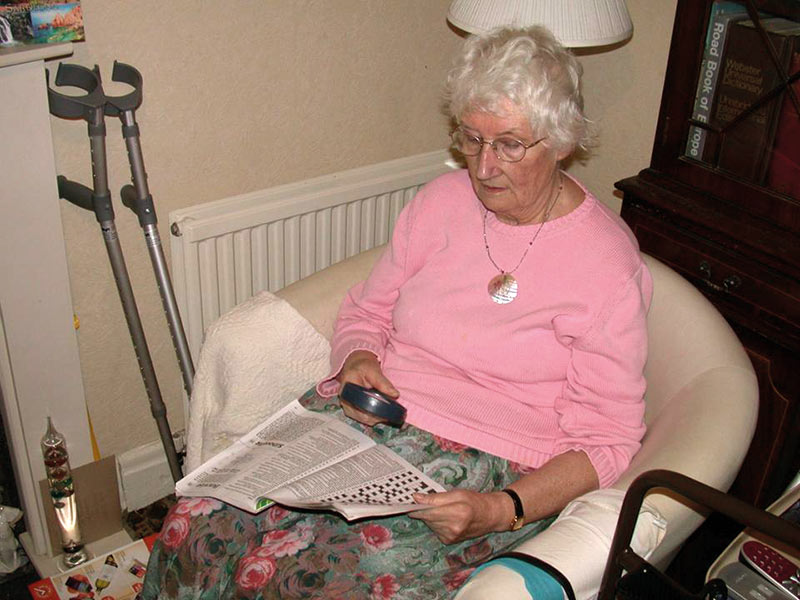
Figure 1: Most visually impaired are elderly
A note on registration
Use of consistent terms among all practitioners is not just PC madness; it helps ensure everyone means the same thing. The older terms partially sighted and blind have been replaced by sight impaired and severe sight impaired. Some people may have enough loss of acuity and/or field of vision to be certified by a consultant ophthalmologist as registerable as one of these two categories. The register is maintained by social services and results in a few benefits, many financial. Importantly, most people with visual impairment are not registered and can be helped significantly with good advice about lighting, magnification and information about their disease and support services by eye care practitioners in practice.
History and Symptoms
Initial conversation should achieve the following:
- Instill confidence and trust .
- Establish a picture of what the person uses their vision for and would like to use their vision for.
- Ascertain where any problems lie and develop some understanding of the person’s motivation to be helped to overcome these.
It may, however, be useful to emphasise some key points when communicating with a low vision patient.
- The practitioner needs to be sensitive to the patient’s emotional response to their disability, especially so in the case of an acquired impairment. Bearing in mind that the commonest cause of registerable blindness in the UK is age-related macular degeneration, it is not uncommon for a patient to have 70 years’ worth of good functional vision which is lost over just a few months or years. In many cases, the first few low vision appointments may well deal primarily with advice and counselling to allow for some acceptance and rationalisation of the situation before any care plan is embarked upon.
- The absence of external signs of the problem combined with the general perception that blindness means total lack of visual function, often means that relatives and carers of the patient are less supportive than might be expected. The practitioner may play a useful role here.
- By setting realistic and achievable goals (‘read for just 10 minutes a day with this magnifier until you can read the whole of the TV listing’) is a simple yet effective way of increasing patient involvement in their care plan.
- The practitioner needs to remember that patients are not governed by ray diagrams and while an aid may be issued of the perfect magnification and best optical design, this is no guarantee that it is of any more perceived use to a patient than an old scratched magnifier given to them by a friend.
- When sight is an integral part of the communication process, such as with patients with an associated hearing impairment, there may be a need to develop a very flexible approach in patient management over a period of time.
Depression is far more common in those experiencing sight loss than in the general population. A UK study used the Geriatric Depression Scale (GDS-15) to screen 13,900 elderly people for depression. The authors assessed people at their family practice and found that those with a visual impairment, defined by a visual acuity of less than 6/18, were three times more likely to report significant depressive symptoms than those with good vision (13.5% vs 4.6 %). The most recent UK figures come from the Depression in Visual Impairment Trial (DEPVIT), conducted at Cardiff University. They screened 1,000 participants attending a low vision appointment either in a community practice or hospital clinic, also using the GDS-15, and found a staggering 43% reported significant depressive symptoms. Because depression is not only a distressing condition in itself, but can have a negative on visual rehabilitation outcomes, it is important that optometrists come to understand and recognise the condition and are able to advise their patients on where to seek help.1
Assessing Vision
It is useful to record the minimum angle of resolution (MAR). The MAR relates to the resolution required to resolve the elements of a letter. Thus 6/6 equates to an MAR of 1 minute of arc, 6/12 to a MAR of 2 and 6/60 to 10. The logMAR score is the log10 of the MAR so is 0 for 6/6 and 1 for 6/60 (see table 2). This means targets smaller than the 6/6 letters, which would be expected to be resolved by a young healthy adult, would carry a negative score value.
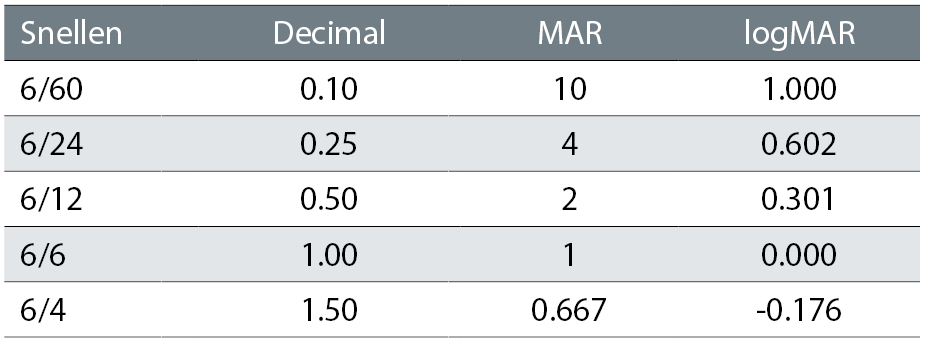
Table 2: Acuity recording equivalents
There are fewer large letters so providing an unequal challenge to those with reduced vision, the letter spacing reduces leading to crowding on lower lines, the line separation is not regular so the challenge changes on reading down the chart which means that moving charts to different working distances alters the demand on acuity.
LogMAR charts, such as the Bailey-Lovie chart (figure 2), address some of these shortcomings by having spacing between letters on each line related to the width of the letters and between rows relating to the height of the letters, and an equal number of letters on each line. This provides a constant task as the patient reads down the chart allowing it to be viewed at different working distances and the acuity to be more easily correlated. Such charts have been found to give greater repeatability of measurement and be more sensitive to detect interocular acuity differences.
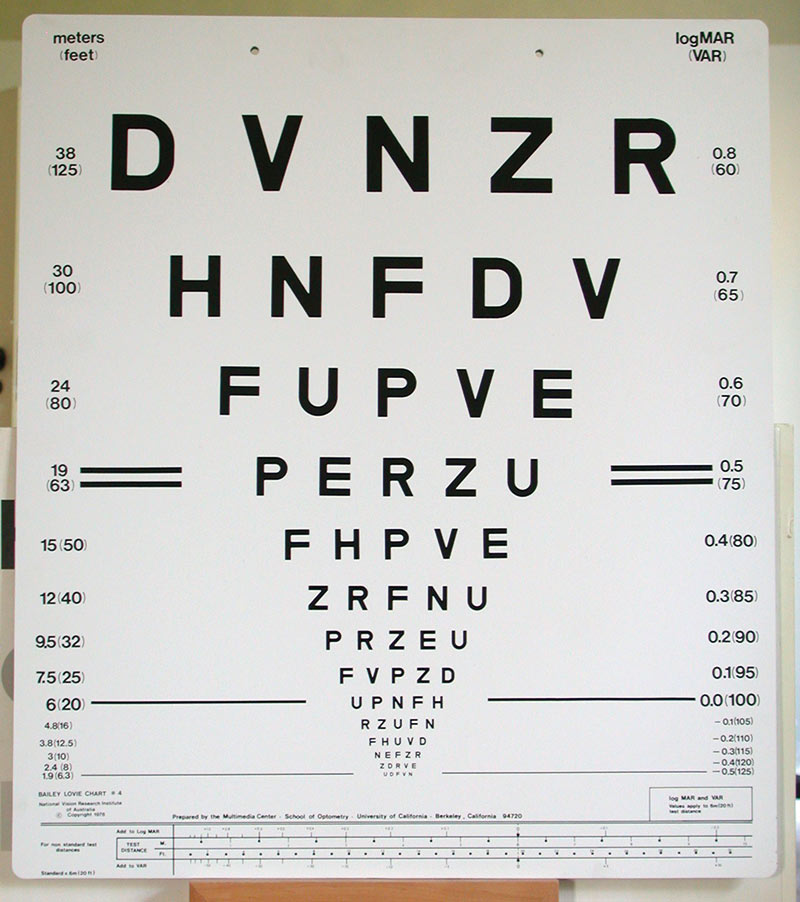
Figure 2: A logMAR chart
LogMAR scores may be noted on record cards either relating to the smallest target line size seen or using the Visual Acuity Rating where 0.02 is added for every letter missed on the line. So where a patient just manages the 6/6 line and no more they are scored as 0. If they miss two letters on this line they are scored as 0.04.
Most practitioners will prefer to refract using a logMAR chart, such as a Bailey-Lovie chart when available. The size progression between each line of letters remains a constant fraction. This means that the same degree of magnification is required to improve the vision by one line (0.1 log unit or 1.25x) at whatever distance the chart is used. Letters have equivalent legibility and there are equal numbers of letters on each row, improving accuracy.
Notes on Refraction
It is often useful to record binocular acuity, especially in the case of patients with nystagmus. As the amplitude of the nystagmus increases upon dissociation of the eyes, the acuity recorded monocularly may be significantly lower in comparison with the binocular acuity. It is also advisable to allow nystagmus patients who have developed a head tilt to compensate for their null point or those with a dense central scotoma to adopt eccentric viewing, where acuity is at its optimum and therefore their refraction will be most accurate. Refractor heads are inappropriate in the low vision examination for such reasons.
Binocular acuities and a gross binocular assessment is also useful in cases where a previously amblyopic eye now retains the better acuity, perhaps, for example, where a disease process has affected the once better eye. The patient may still prefer to use the eye with the lower acuity particularly if there has been a long-standing squint. The aid will be prescribed to the fixating eye. Occasionally this requires the fogging of the fellow eye to provide better visual comfort with the end appliance. It is useful to assess any benefit of occlusion of either eye during the refraction procedure.
It is not uncommon for patients with severe photophobia such as seen in oculocutaneous albinism or rod monochromatism, to request that the room lights be dimmed or the back illumination of the test chart to be switched off during refraction. The amplitude of the nystagmus will also increase under these circumstances. Again, refract wherever possible in the circumstances most comfortable for the patient and thus likely to give you the most accurate end point. However, it is always important to record acuities in both the normal and dim illumination.
There are several tips and methods for refracting a patient with low visual acuity; bigger steps, higher cross cyls for example. One particular useful method is to ‘work backwards’. For example, consider a patient with a lengthy history of corneal dystrophies, failed operations and high myopia and with an unaided acuity not measurable at various test chart working distances. Starting with little more than this is quite a challenge, especially if there is no useful retinoscopy reflex. However, when presented with reading material, the patient quickly brought the text up to their useful eye, holding it a distance of 4 or 5 cm. At that point they could begin to discriminate some letters. What is of importance here is the working distance. By placing a -20D lens in the trial frame, the patient could now see 1.4 which is a much better starting point.
Alternatively, place an addition in the trial frame of, say, a +4.00D addition. If a patient is emmetropic, they will hold the text at the focal length of the lens, in this case at 25cm. By altering the working distance of the object, measure the point at which it comes best into focus. If for example, the patient holds the text at approximately 12 cm then he is a myope of approximately -4D. If, however, he prefers a longer working distance and holds the text at, say 50cm then he was already a hypermetrope of approximately +2D. 2D of the +4D in the trial frame is correcting his ametropia; the leftover 2D being used as an addition, thus only focusing at 50cm, the focal point of a +2D lens.
This method of course cannot be used in the same way with children with active accommodation. These rather crude methods, however can give us a much better starting point, especially if there has been no useful reflex in retinoscopy. But they must be used in context. Finally, a pinhole is always useful to indicate any residual uncorrected sphere (or a stenopeic slit lined up along the axis of any uncorrected cylinder where little has been).
Predicting Magnification
Once the best corrected visual acuity has been achieved, it is time to decide upon a target acuity for whatever tasks have been identified. This might be:
- Distance magnification – if a particular distance task has been discussed, typically watching television or looking at shop signs, then the first step would be to estimate how much further down the letter chart the person would need to be able to read to therefore be able to undertake the specified task more easily. This often involves the use of telescopic devices (see later), but it is worth pointing out that more often than not, insistence on achieving the smallest letter targets is rarely appropriate. Most patients prefer a less magnified image that, though perhaps not completely defined, can be easily identified and is more stable and within a larger field of view than might be the case were the strongest magnification offered.
- Near magnification – with any significant distance correction in place, it is important to find what a person may read with either their existing reading addition or, more typically in a low vision clinic setting, with a +4.00DS addition in place. Knowing this allows a good prediction of the likely required magnification.
At this point it is worth noting the term acuity reserve. While there may be some benefit to offering minimum required magnification, such as minimising magnifying lens power and therefore thickness, distortion, field of view, working distance issues and so on, and might be considered for spot tasks like checking a price in a shop, it is not useful when prescribing any magnification for prolonged use. By offering greater magnification than that predicted as needed for any target acuity, and therefore providing an acuity reserve, the higher magnification value should make prolonged viewing of the target acuity easier and less of a strain.
An acuity reserve is usually offered when magnifiers are used for reading for any length of time. Most practitioners choose N8 as representative of typical news and book print of reasonable contrast. Using an acuity reserve of 2:1, a sensible option in this author’s view, sufficient magnification should be offered to allow the person to achieve N4 such that N8 might be easily achieved and allow them to read a newspaper more comfortably. Despite textbooks highlighting specific reserve values, each patient’s performance should be judged on an individual basis and there is no single right solution for every patient with the same level of vision.
Example
A patient can manage N24 with a +4.00DS addition over their distance correction. They really want to start reading their newspaper again. What might be the expected level of magnification required to support this wish?
- Estimated task acuity is N8
- An acuity reserve of 2:1 is sensible
- Target acuity with magnification is therefore N4
- N4 is 6 times smaller than N24
- Predicted required magnification is 6 times
So how might this magnification be achieved?
‘Optical’ Low Vision Aids
Low vision aids take many forms. Some are simply larger versions of things, for example large print books. These exploit relative size magnification (figure 3). Some allow things to be held closer than they would normally be held, so making them bigger (relative distance magnification). Strong glasses, or spectacle magnifiers in this context are an example. Others actually bend light to achieve a bigger image, angular magnification. Telescopes do this and this allows distant objects to be enlarged.
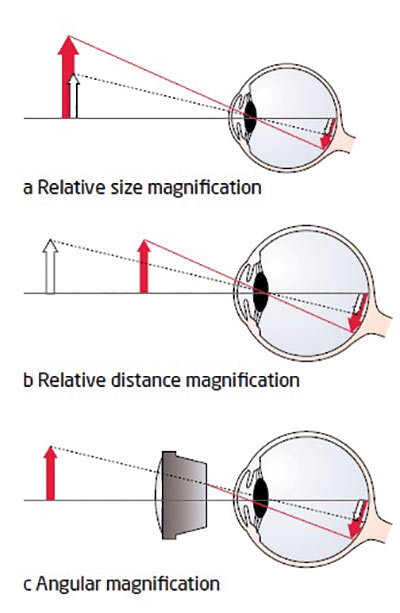
Figure 3: Different types of magnification
Usually, there are considered to be four categories of ‘optical’ or simple low vision aid:
- Spectacle magnifiers (strong glasses)
- Hand magnifiers
- Stand magnifiers
- Telescopes.
Spectacle or head borne magnifiers
These are single or compound lens aids held in front of the eye for near magnification purposes (figure 4).
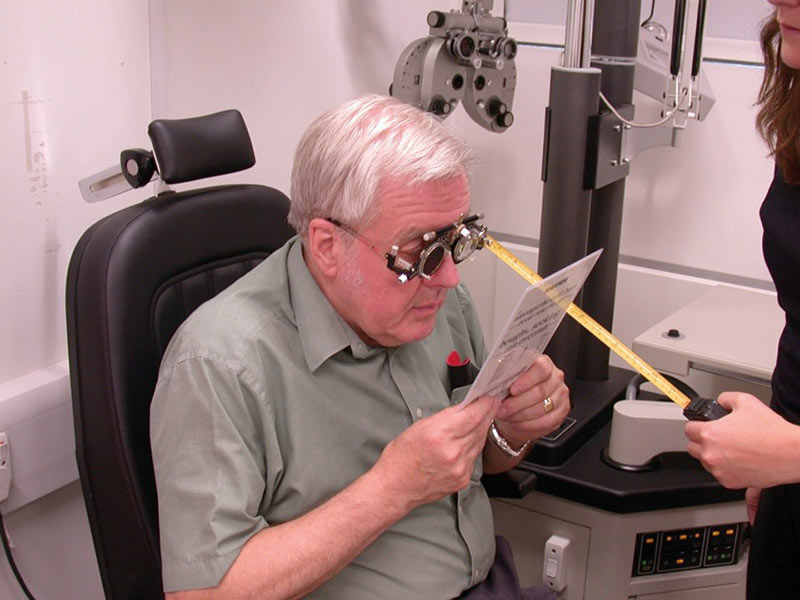
Figure 4: Spectacle magnifiers
Pros
- Maximum field of view. This is provided by having the lens as close to the eye as practicable. This is particularly useful in scanning tasks such as reading.
- Both hands free (though the need for accurate placing of the text may negate this).
- Cosmetically and psychologically acceptable. Particularly with lower magnifications, there may be considerably less stigma attached to the wearing of spectacles. Elderly patients who have recently lost vision may find spectacles far more acceptable.
- Tints and coatings. Spectacles may be readily adapted to suit patient needs where needed. Tints may be useful with albinism, aniridia, tapetoretinal degenerative diseases and so on. Aphakes benefit from UV protection. Patients with corneal hyperaesthesia may benefit from side shield attachment.
- Wide range available. There are many variations including high power prescription lenses, ready-mades, trephined or advanced mounted adds, bifocals, hyperoculars and so on. The greater the range, the more likely an aid may meet a patient’s requirements. Most of these forms allow for the correction of ametropia, important where there is astigmatism present.
- Prescribing may not require specialist equipment within the consulting room.
- Binocularity may be maintained. This may enhance acuity and total field of view. Because of convergence problems at closer working distances, base-in prism or decentration may be
- necessary for additions over +4.00DS and as the near add approaches +12.00D binocularity becomes impractical to maintain.
Cons
- Short working distance. This may reduce illumination, cause some physical difficulty to maintain and be associated with adaptation problems with patients more attuned to greater working distances. There is some stigma attached to holding objects very close. Binocularity is difficult to maintain at close working distances.
- Expense. High power lenses may be expensive.
Example
A patient wants to be able to read their newspaper from cover to cover. Their current spectacles are only recently prescribed by a colleague and the patient is able to just achieve N12 with their +2.50D addition. What magnification is predicted as required and how might this be achieved with spectacle magnification? What might hinder success with this option?
- Estimated task acuity is N8
- An acuity reserve of 2:1 is sensible
- Target acuity with magnification is therefore N4
- N12 is three times bigger than N4, so three times the magnification of the image with their spectacles is required, or in other words, a +7.50D addition – note that in this case we have adopted a starting point using their existing spectacles rather than a +4.00D addition. This is why the end point is not +12.00D which is what most would first assume is an addition offering three times magnification
- A +7.50D addition requires a working distance of 100/7.5cm or approximately 13cm. The working distance is significantly reduced even at what might be considered modest magnification levels. Without good advice on local lighting and training to be able to comfortably assume the new close distance, this option may prove unsuccessful
The main advantage of spectacle magnifiers is the improved field of view, when comparing this type of device with, for example, a spectacle-mounted near telescope of the same magnification. An improved field of view may improve a patient’s reading performance once the setback of working distance is overcome. As with all spectacle-mounted devices, the patient will have the use of both hands and if crouched over a table or having erected a reading stand, then he/she may be able to use a pen. The device may also be easily tinted in cases of severe photophobia (as in a cone dystrophy for example).
If the patient has a spherical refractive error, then this is easily compensated for within a singular spherical lens of the spectacle magnifier. So, if the patient is a +12D aphake and requires a X4 spectacle magnifier (thus a lens of 16D), then order a spectacle magnifier of 28D. Ready-made options are easy and cheap options for lower range spectacle magnifiers where no cylinder is required in the final lens correction.
Where a patient requires binocularity at a working distance of less than 25cm then base in prism may be useful (one prism dioptre base-in for each eye for every dioptre over +4.00 is a good rule of thumb to follow) or, for segments, inward decentration. Binocularity is rarely a requirement for age-related visual impairments.
Hand-held magnifiers
Pros
- Socially and psychologically acceptable. The widespread use of hand magnifiers has lessened any stigma associated with their use.
- Convenient and portable. Particularly useful for short term tasks requiring extra magnification, such as reading a medicine bottle or telephone directory. Uneven surfaces, such as food tins, are easy to view.
- Flexibility of task distance. Maintaining the object to magnifier distance will keep the magnification constant irrespective of magnifier to eye distance. By moving the magnifier towards the eye, the field of view of the object may be maximised.
- May be internally illuminated.
- Inexpensive, excepting the larger aspheric forms.
- Wide range available. The higher power lenses (+16.00D to +32.00D) tend to be aspheric. Even higher powered systems (>+32.00Dare available and are usually compound systems of two or three lenses.
Cons
- Physical constraint. Patients with shaky hands or grip problems may find use difficult. The effort required in holding the aid may make it unsuitable for prolonged tasks.
- Reduced effective magnification. Either for reasons of comfort or to minimise aberration effects, the patient may hold the magnifier much closer to the page than the focal length of the lens. This will reduce the magnification of the object attained and is a reason why the hand-held magnifier prescribed is often of a magnification greater than expected from estimation.
- Require instruction. If used inappropriately, the aid may be of little use. At higher powers, if the lens needs to be held close to the eye to allow adequate field of view, a spectacle-mounted device may be preferred. Patients often wrongly assume larger lenses to be more powerful. If the aid has a right or left handed design, the flat surface of the lens needs to be towards the object.
- Poor resilience. Due to the use of hand-held devices as occasional-use aids, they are especially vulnerable to scratching with continual movement in and out of bags and pockets
It is important to remember a couple of things about hand magnifiers. First, if they are held at exactly their focal length from the object (say a page of print) then the light from the aid reaching the eye will be parallel and therefore no accommodation or reading correction is needed, irrespective of what the working distance is (figure 7). The closer the patient moves their eye to the lens, the bigger the field of view, but magnification is unaffected (figure 8). If the print is too small, then a stronger aid may be best. However, at the focal length from the page, the image is not as sharp as most would like as aberrations are maximal. Most patients tend to hold the aid closer to the page to improve the image quality and therefore achieve less magnification. For the emmetrope or pre-presbyope, therefore, a good rule of thumb is to issue a stronger hand magnifier than one might otherwise have predicted.
This however, is rarely the real-life situation. Most of my patients are elderly and more often than not are wearing a near addition. This is important as the magnification that they achieve with the magnifier is related to how much bigger the equivalent power of the spectacle/hand magnifier combination is compared to the spectacles alone (ie their starting magnification). So, if a patient asks for a stronger hand magnifier, two things must be done:
- Ask them to demonstrate correct use of the aid (figure 5). This is often the answer as the lens may not be being held far enough from the page. Say the following to the patient, ‘Hold the object (book, newspaper) at a comfortable working distance. Place the magnifier close to the page and then move it away and notice how things get bigger. Keep going until it starts to go out of focus then keep the magnifier as close to this position as possible to get best magnification from it.’
- Find out what spectacles they are wearing. If they are wearing multifocals, then have them decrease the lens to spectacle distance and this acts like a ‘zoom’ function (see example).
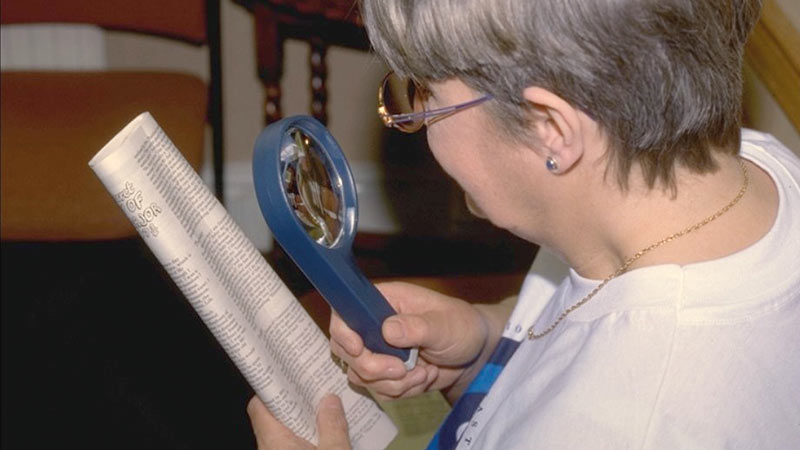
Figure 5: Demonstration of correct use of hand magnifiers is essential for their success
Notice how if a hand magnifier is marked as 6x, this is rarely the magnification achieved by the user. Modern low vision aids are calibrated by the trade magnification formula M = F/4+1. So if there is a 6 on the handle, the equivalent power of the lens will be 20 DS. The final magnification is dictated by how the lens is positioned relative to the task and any other reading addition.
Why is this important? Because in many cases where a patient says their hand magnifier is not strong enough, the best option is to tell them to move the lens and object closer to their glasses, because the smaller the z value, the bigger the magnification (see example in the next column).
Example
A patient wearing a +2.50D addition finds their +20D hand magnifier inadequate and wants a stronger one. The hand magnifier has a 6 on the handle (calibrated by F/4 + 1). What do you do, having first ascertained they are using it correctly?
It is useful to remember that simply reducing the ‘z’ distance (the spectacle to lens separation, see Figure 6) serves to increase the magnification and is usually all that is required.
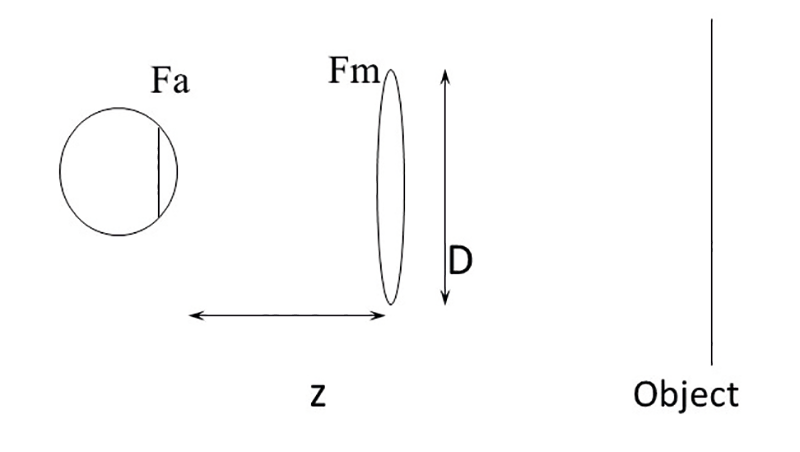 Figure 6
Figure 6
The magnification for the use of a hand magnifier is simply the ratio between the original dioptric correction value (that of the reading addition, Fa) and that of the new lens system Fe (reading addition Fa and spectacle add Fm separated by z). The latter may be calculated by the formula:
Fe = Fm + Fa - z.FmFa
If the mag is held up right to the spectacles such that z = 0, then the equivalent power Fe is +22.5D (Fa + Fm). This is 9X bigger than the starting power of
+2.50D. If z is the same as the focal length of the lens (in this case 100/20 = 5cm) then:
Fe = 20 + 2.5 – (0.05 x 20 x 2.5) = 20D
Note that where z is the focal length of the magnifier lens, then Fe = Fm. This is 8X magnification.
As z increases, the Fe reduces accordingly. For the z value of 20 cm;
Fe = 20 + 2.5 – (0.2 x 20 x 2.5) = 12.50D
So magnification is 12.50/2.50 = 5 times
Stand magnifiers
Pros
- Constant and accurate working distance. Particularly useful where tremor or physical difficulties need to be considered. At very high powers, the constancy of working distance becomes more important as depth of field becomes more restricted.
- Internally illuminated. The stand itself reduces task illumination so an internal light source may be important.
- Hands-free. Tasks where a tool or instrument (such as a pen) are required are easier with a stand magnifier. Some lower power aids have an in-built tilt facility to enhance this and also to reduce reflections from overhead lighting.
Cons
- Require instruction. This is particularly important with designs where the emergent light is divergent as the presbyopic patient should be instructed to use the magnifier in conjunction with reading correction. Patients approaching presbyopia may complain of the need to lift the magnifier off the page to maintain a clear image and appropriate correction should be given.
- Bulky. The need to maximise task illumination either by stand design or internal light sources may make the aid less easily portable.
If the lens of the stand magnifier is set at f1 from the object, (the anterior focal length) then the emergent rays (vergence) are parallel (figure 7). This would be the case for a 10D lens set at 10cm from the page, for example. Thus, to the patient’s eye, the image of the object would appear to be set at infinity. In order to focus this image, the patient will need to wear their distance correction and all accommodative effort is relaxed.
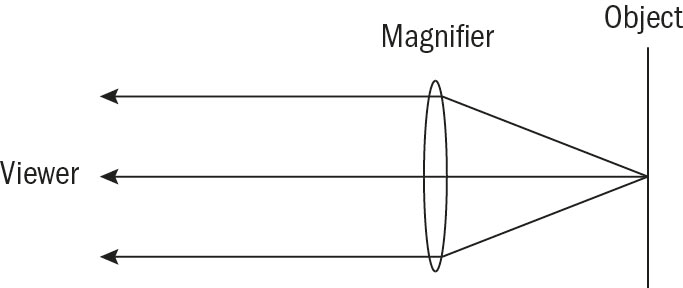
Figure 7: Lens at its focal length from an object emits parallel light
Furthermore, moving closer to the magnifier lens has no impact on magnification but will serve to increase the field of view of the object (figure 8).
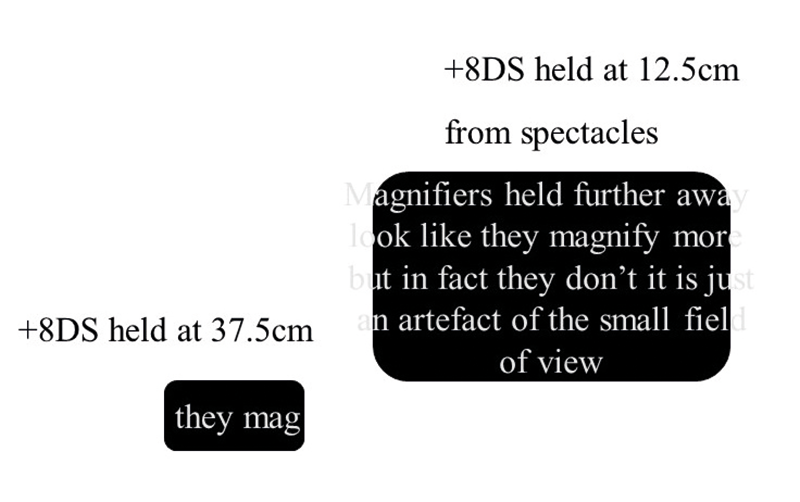
Figure 8 Increased field of view but not magnification
Conversely, if the lens to object distance is less than the focal length of the lens, then the emergent rays are divergent and the patient will need to either accommodate or use their reading spectacles to focus the image.
It is often of importance, therefore, for the patient to keep any old spectacles as it may mean that they will be able to get optimum efficiency from the aid prescribed. Most modern lower powered stand magnifiers are designed this way to minimise aberrations affecting the image. To satisfy yourself, look through a stand magnifier and gently lift it off the page. The image will initially increase in size but also become less sharp (spherical aberrations) and develop purple and orange fringes (chromatic aberrations). This confirms the stand magnifier is set at a distance from the object less than its focal length.
Example
A 48-year-old diabetic (Px T) has to lift his stand magnifier from the page to see print clearly and wants a stronger one now. His measurable acuity is the same as when you first prescribed the aid five years ago. Do you give him a stronger one?
No. He is presbyopic now and cannot cope with the divergence of the emergent light, hence moving the lens away from the page to make this parallel. Prescribe him readers appropriate for the working distance.
Patients benefit from understanding that stronger usually means smaller, therefore less field of view. This is particular so when they ask for a larger lens because they can only see a few words at a time. Typically, the complaint is of difficulty locating the start of the next line when reading a block of text.
The obvious answer to this problem, therefore, is to encourage the patient to move a little closer to the aid to improve the field of view. However, the shorter the working distance, the greater the divergence of the light hitting the eye and therefore, to maintain a clearer image, it is often necessary to prescribe a stronger reading addition in their glasses.
Example
A patient moves their eye right up to their +6.00D stand magnifier to maximise the field of view. How much accommodation/reading addition is required to keep the image clear?
The lens to object distance is measured to be 10cm. Light from the object will hit the lens with a -10.00DS vergence of which +6.00 will be neutralised by the lens. This leaves -4.00DS emergent vergence and hence the required amount of accommodation or addition for this patient. The apparent image will be 25cm away (100/4). Below are the values as the eye is moved further from the lens.
Lens–eye separation (cm) Accommodation/reading addition (D)
0 4
5 100/(25 + 5) = 3.30
15 100/(25 + 25) = 2.50
25 100/(25 + 25) = 2.00
Telescopes
A telescope allows magnification of an object without having to change the working space. This is achieved by a combination of lenses separated by a finite distance, plus lenses in an astronomical or Keplerian system, or a negative eyepiece and positive objective in a Galilean system.
Pros
- Offer distance magnification.
- Near telemicroscopes offer an increased working distance over spectacle magnifiers. They are sometimes useful for hobbies or tasks where a tool or implement needs to be between the viewer and the task.
- Variable focus. Most distance telescopic systems may be adjusted to allow for some intermediate and near viewing. Some allow different caps to be placed over the basic unit.
- Spectacle-mounted telescopes may be used for longer viewing tasks, such as television viewing, if spectacle mounted.
- Portability. Hand-held and finger-ring designs are easily carried about.
- Binocularity maintained. This is possible with either spectacle mountings (the tubes converged for near viewing tasks) or hand-held binoculars. Careful focusing is required to maintain comfortable binocularity.
- Adaptable. Many near telescopes may be trephine or advanced mounted and often may be interchangeable with near spectacle magnifying devices.
- Wide range available. There are many devices available over a wide range of magnifications, including some contact lens aids (high minus contact lens with various high-plus spectacles over the top).
Cons
- Restricted field of view. The further the objective from the eye, the greater the restriction.
- May be expensive.
- Poor cosmesis.
- Often heavy.
- Training often required for focusing.
- Spectacle form may need patient fitting to avoid diplopia or distortions.
- Hand or head movements magnified in the view (this author has heard a patient to whom he has prescribed spectacle mounted telescopes complaining of the TV moving as they breathe or their heart beats).
To begin, a brief clarification of terms that are sometimes confused. A telescope might be defined most simply as two or more lenses separated by a gap that allows the refraction of incident light from an object in such a way as to increase its angle of incidence on the retina. This is known as angular magnification. Note how, though many telescopes are found mounted on spectacles, they are not spectacle magnifiers, this latter term strictly applying to one single thickness of refracting material mounted in a frame (or strong glasses!).
For a lens system to offer an apparent increase in the size of an object purely through angular magnification, then both the object and the image have to be at infinity. In this situation, the system is said to be afocal (or in normal adjustment). As soon as an image is formed closer than infinity and in such a way that it appears larger than the object, then this system is said to be focal (in so much as it now has a finite focal length) and magnification is now formed primarily by relative distance magnification, the image formed at a distance that makes the object appear to be closer. As soon as a telescope is adapted to view intermediate or near objects, it is defined as a telemicroscope (though other terms abound, such as near-telescope).
Two key uses
Before we consider some features of the two main designs of telescopes, which is important if one wants to use them to best clinical advantage in a variety of situations, it is worth emphasising two important advantages of telescopes over other optical aids. Firstly, by exploiting angular magnification, telescopes are able to offer a non-electronic way of magnifying distant objects. There are obviously situations where someone with a visual impairment needs to see a distance object more easily and telescopes can help.
Secondly, telemicroscopes, or a telescope focused for near, may offer a longer working distance than a comparable magnification spectacle magnifier which again may prove useful for some near tasks.
Types of telescope
Telescopes used in low vision tend to exploit refraction. Reflection telescopes exist, as budding astronomers will know, but they are not practical in this arena. Refracting telescopes are made up of two lenses (and further lenses may be added to the basic design). The objective lens is a positive lens that acts to converge incident light towards the other lens, the eyepiece. The nature of the eyepiece dictates which of the two designs of telescope the system is; a negative eyepiece is found in a Galilean telescope, while a positive eyepiece is found in a Keplerian (or astronomical) telescope. For afocal systems, the magnification is found to be the ratio of the power of the two lenses;
M = - F1/F2
Or M = - Feyepiece/Fobjective
For an afocal system, the equivalent power is zero. When it is focused on an intermediate or near object then it will have an equivalent power related to the viewing distance at which the object is viewed.
Galilean Telescopes
The combination of a positive objective lens and a negative eyepiece is known as a Galilean system. For light coming from infinity, the objective lens focuses upon a point which is coincident with the primary focal point of the eyepiece. Note:
- The eyepiece is negative.
- The eyepiece is numerically stronger than the objective.
- The length of the system is the sum of focal lengths of the objective lens (f'1) and that of the eyepiece (f2) and, as the eyepiece is negative, this represents a lower numerical value than if the two lenses were positive.
- The image formed is erect.
- The exit pupil, which is the image of the objective as seen through the eyepiece, is located within the tube.
Example
A Galilean telescope is formed of a +20.00DS objective lens and a -50.00DS eyepiece. What is the magnification?
M = Feyepiece/Fobjective
= - (-50)/20
= 2.5 x
The answer is a positive number so implying an erect image and therefore confirming a Galilean system.
Keplerian telescopes
A Keplerian system is one where the objective and the eyepiece are both positive powers. Again the secondary focal point of the objective coincides with the primary focal point of the eyepiece. Points to note include:
- The positive eyepiece is numerically stronger than the objective.
- The length of the tube is the sum of the two focal lengths. Both lenses are positive and so the length is greater than that of a Galilean system.
- As both of the lens powers are positive, then the magnification value will be a negative number (see example). This implies an inverted image. Were the image to remain inverted, then the system is said to be astronomical. Stargazers will know that image inversion when staring into space is the norm. However, for use as an aid in everyday life, a telescope with an inverted image would prove pretty well impossible. For this reason, astronomical systems include prisms to erect the image at which point the Keplerian system is no longer astronomical but instead might be described as terrestrial.
- The exit pupil is just outside the eyepiece – this is important as it means that the limiting factor for light leaving the system is pretty well coincident with the entrance pupil for the viewer, that is their iris. Most light leaving the telescope will enter the viewer’s eye. This is one reason why image quality with a Keplerian system is better than that of a Galilean system.
The light rays cross over within the tube. Placement of a stop at that point can reduce spherical aberration and again lead to an improved image quality.
Example
A Keplerian telescope is formed of a +20.00DS objective lens and a +50.00DS eyepiece. What is the magnification?
M = Feyepiece/Fobjective
= - 50/20
= - 2.5x
The answer is a negative number and therefore inverted.
For both types of telescope, uncorrected ametropia will have an impact on the expected magnification. The best way of thinking about this is that the uncorrected ametropia modifies the power of the eyepiece.
Example
Which type of telescope will give greater magnification for a -10.00DS myope? If we use the same telescopes as in the previous two examples, then for the Galilean system with the -50.00DS eyepiece, the eyepiece value used with the uncorrected myope now becomes -40.00DS. Therefore, magnification is:
M = - (-40)/20
= -2x
This is less than the magnification found in the previous example.
For the Keplerian system, the eyepiece value for the uncorrected myope is now +60 and so;
M = 60/20
= 3x
So the uncorrected myope achieves greater magnification with the Keplerian system, less with the Galilean. For the uncorrected hyperope, the opposite of this will be true.
Telescopes are available in a wide variety of forms. One unusual variation that has been tried in the past is the combination of a contact lens representing the eyepiece and an objective lens in a spectacle. This has the advantage of a wider field of view and somewhat better cosmesis, but at the expense of limited magnification range and problems of vision stability as the contact lens moves on the eye.
Telescopes prescribed for distance viewing may be monocular (figure 9) or binocular. Binocular are recommended for small children as they are easier to grasp and also a binocular device is always better for those with nystagmus as maintaining binocularity helps maintain some stability of the oscillation.
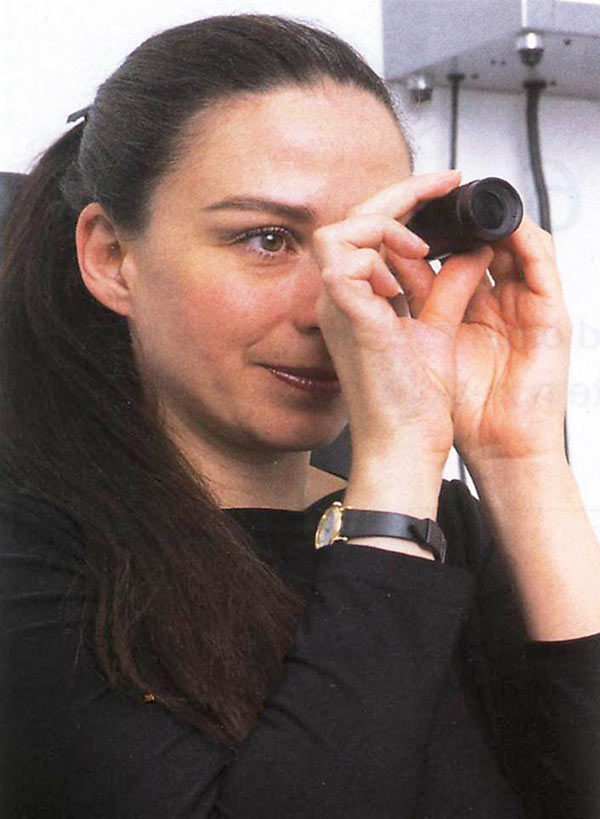
Figure 9 Hand held spotting monocular telescope
Distance telescopes may be hand-held or spectacle mounted (figure 10). The hand-held variety are used for portable spotting devices while the spectacle mounted are often prescribed for TV viewing. The hand-held devices are sometimes mounted on rings that fit easily over a finger to help their use. TV viewing spectacle mounted telescopes are such devices dedicated to the purpose, tend to be Galilean in design and limited to less than three times magnification. In this author’s view they can be heavy, often difficult to focus, and the set PD makes them sometimes fiddly to set in a way that avoids uncomfortable or even double vision.
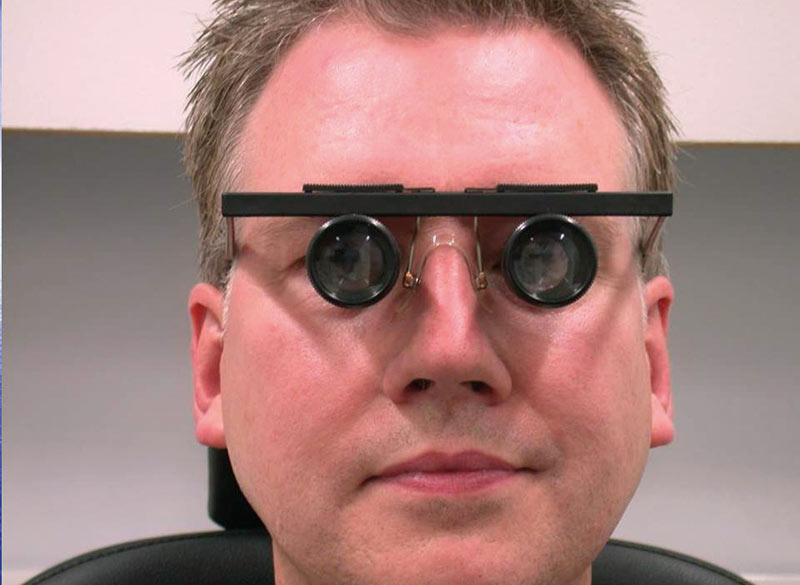
Figure 10 Spectacle mounted binocular telescope
Near telescopes may be dedicated devices but with the barrels converged to provide a near view. They may be telescopes that can be cemented or screwed onto an existing frame.
Markings
Typical markings on a telescope consist of a number before and after an x, thus:
8 x 24
The number before the x is the magnification while the number after the x represents the diameter of the objective lens in millimetres. The diameter of the objective lens represents the entrance pupil of the system as it limits the light entering. Knowing this, therefore, has some bearing on the way the telescope will be used. A larger value should offer a wider field of view, but also make the telescope more weighty and bulky. This might be remembered when deciding which of the two priorities should be honoured. Secondly, knowledge of these values plus and awareness of the size of the patient’s pupil gives some indication of the brightness of the image seen by the patient. Light leaving the system, as we have previously stated, is determined by the exit pupil (or the image of the entrance pupil). Dividing the magnification into the objective diameter gives us the exit pupil diameter, so in our example:
24/8 = 3mm
Compare this with two other systems;
10x20 (exit pupil diameter 2mm)
10x40 (exit pupil diameter 4mm)
Were a patient to have a 3mm diameter pupil, they should gain an equally bright image with the 8 x 24 and the 10 x 40, but a less bright image from the 10 x 20 as the exit pupil is smaller than the entrance pupil of their own eye.
Some telescopes offer a third marking thus:
8 x 24 7°
The third number represents the field of view. Remember the field of view is governed by a number of factors. A Galilean system will generally have a reduced field of view because the exit pupil is somewhere in the tube (due to the eyepiece being negative power).
Very occasionally there will appear figures on the side of the tube, such as:
∞ – 100
This represents the focusing range for a system capable of focusing. Many telescopes offer a range of viewing distances, most requiring a lengthening of the tube (usually by twisting the barrel) to offer a closer focus but some requiring the addition of lens caps to allow closer focus. Keplerian telescopes generally offer a larger range of viewing distances.
Uses of telescopes
For distance viewing, a common yet erroneous reason for prescribing a telescope is for ‘spotting the bus’. In general, the devices are best used for static targets. The reduced field of view means that detecting moving targets, such as buses, is a skill that few master. Better targets are shop signs, location signs above aisles in supermarkets, train times, clocks and so on. Hand held devices are for spotting primarily, while spectacle mounted devices do allow more prolonged viewing of, for example, a display screen.
In some areas of the world, visually impaired people may still drive. This is due to a device called a bioptic – this is simply a spectacle with a distance telescope attached to it on a moveable holder allowing it to be moved into place wherever a detailed distance target needs to be viewed. Some patient’s find these useful as when walking around (or even driving) the field is the useful vision, but when a sign or something of detail needs viewing, the telescope may be swung into action. Visually impaired people are not legally able to drive in the UK. For this reason, the advent of driverless cars is anticipated with excitement by many.
Prescribing
Distance
To move someone from 1.0 (6/60) to 0.0 (6/6) would require a 10 times telescope. Easy – however, telescopic magnification should be prescribed by erring on the conservative side. If the required targets are closer to 6/9 in estimated size (text on TV or far away signs) then a six or eight times is likely to be both adequate and offer a more stable view. Do not offer a reserve as with close work and remember that the higher the magnification, the more the image will jump about.
Near
For near, the predicted magnification may be set in a trial frame during the assessment and the patient asked to read their required target acuity. If useful the telescope may then be prescribed. Again, err on the cautious.
Conclusion
Increasingly, patients are benefitting in advances in electronic aids. In the next article in this series, we will consider these and also have a look at lighting and what other support services are available.
Bill Harvey is a visiting clinician at the RNIB clinic in London.
References
1 Nollett, C. Depression: A guide for eye care practitioners part 1. Optician, 28.10.2016
